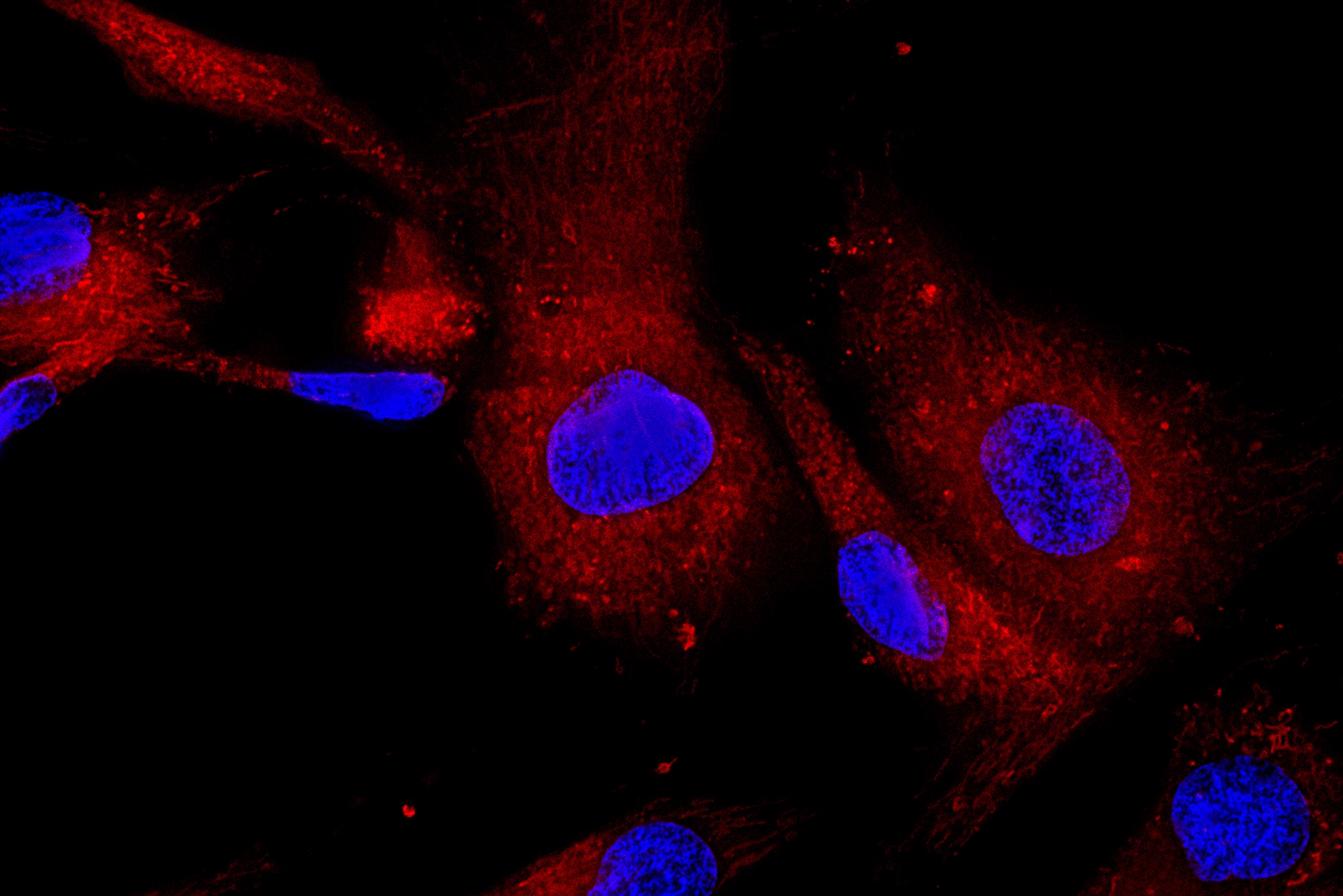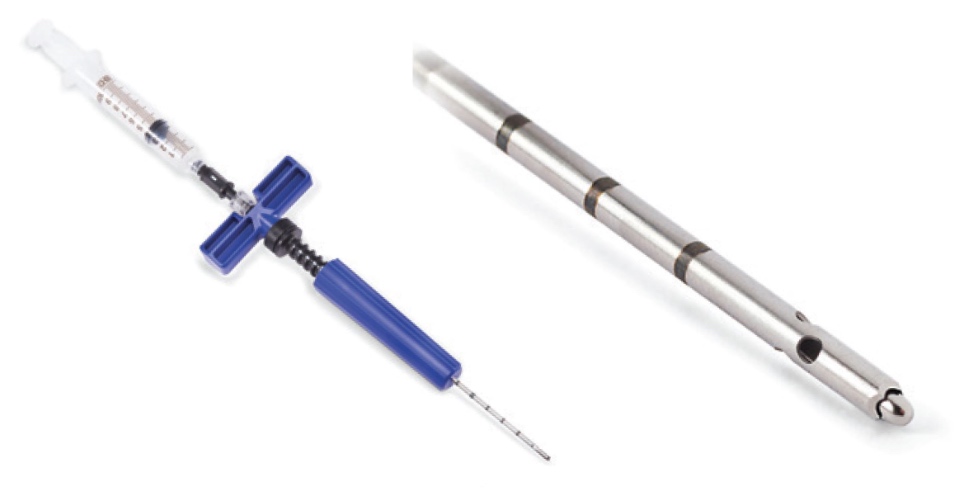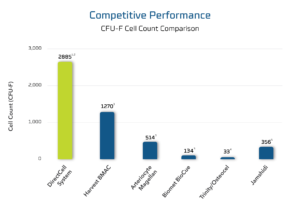How the Bone Marrow Aspiration Technique Affects Stem Cell Counts

The objective of a bone marrow aspiration procedure is to harvest as many mesenchymal stem cells (MSCs) as possible while minimizing morbidity at the donor site and dilution with peripheral blood. Multiple factors can affect stem cell counts in the bone marrow aspirate (BMA), including the aspiration site, aspiration technique, and, if conducted, the post-harvest processing of the marrow aspirate (Piuzzi, 2018).
Despite advances in the field, many surgeons continue to use time-consuming bone marrow aspiration techniques that are highly dependent on technique resulting in variable stem cell levels or require expensive equipment and complicated disposable systems that yield fewer high-quality cells. Clinical teams that excel at choosing and using the right bone marrow aspiration technology will likely have better patient outcomes than those who don’t – and they might even reduce costs.
Best Practices for Bone Marrow Aspiration in Brief
To contextualize the impact of bone marrow aspiration techniques on stem cell counts, it’s critical to understand a few rules of thumb that surgeons use during the process. Best practices for aspiration include:
- Changing needle position to maximize stem cell uptake
- Avoiding disrupting the microvasculature with aggressive motions
- Avoiding aspiration of peripheral blood
- Avoiding harvesting too much fluid from any single location
- Minimizing marrow handling time following aspiration
Depending on the tools that surgeons have on hand, conforming to these guidelines can deliver significantly different results.
Advantages and Disadvantages of Common Bone Marrow Aspiration Techniques
Bone marrow aspiration equipment varies considerably in terms of its cost, ease of use, and performance characteristics.
 Jamshidi Needles
Jamshidi Needles
Jamshidi needles are ubiquitous, inexpensive, and relatively easy to use. Originally designed for biopsying bone marrow rather than harvesting a large volume, traditional Jamshidi needles have an open and tapered tip and a small capacity. Because they only have one opening at the tip, these needles can only harvest marrow from one level of depth at a time, requiring the surgeon to manually reposition the needle several times to obtain the desired volume.
Jamshidi needles are suitable for aspirating up to 2 mLs of marrow, which can yield a cell count of around 356 CFU-f (colony forming units) per mL, depending on the patient and the precise application of the technique (McClain, 2005). However, peripheral blood contamination of the Jamshidi aspirate is common, especially as the 2 mL maximum is approached. This is especially problematic when a high volume of BMA is needed, as it may take quite a few different harvest sites to gather enough marrow volume for the graft (Harrell, 2016).
Bone Marrow Aspirate Concentrators
Bone marrow aspirate concentrators (BMACs), commonly referred to as “centrifuge systems,” are kits that enable clinical staff to isolate concentrated stem cells from the collected bone marrow aspirate. Generally, these kits utilize disposable components as well as specialized centrifuges (Pintus, 2018).
Clinicians first extract a large volume of marrow, up to 100mL or more, using a compatible needle system, then use the kit and centrifuge to concentrate the sample in preparation for grafting. Although BMACs typically yield more stem cells than Jamshidi needle aspiration, with a typical cell count being 1270 CFU-fs per mL, a significant number of cells are discarded with the separated peripheral blood (Hedge, 2014). Additionally, BMACs are costly and require a substantial amount of OR time and dedicated, trained personnel due to the complicated set-up and processing method (Chahla, 2017). Further, these systems require moving the sample off the sterile field for processing, which introduces the risk of contamination.
 Multi-Level Harvesting Systems
Multi-Level Harvesting Systems
In recent years, newer and more innovative methods of harvesting BMA have become available on the market. The main innovation has been the introduction of multi-level, multi-directional harvesting needles. Due to their design, these systems can obtain highly concentrated bone marrow from numerous locations within the marrow space from a single insertion. What is most attractive is that they do not require the user to perform time-consuming centrifugation outside of the sterile field.
So how are newer systems different? Unlike traditional Jamshidi needles (see (a) below) which contain only one opening (at the distal tip), newer needle designs (b) feature multiple lateral holes to help aspirate bone marrow in multiple, simultaneous directions. Some newer, improved Jamshidi needles contain lateral holes; however, the distal hole at the end of the improved Jamshidi remains the main aspiration path and can still pull in peripheral blood that dilutes the BMA.
To solve this problem, next-generation BMA devices, such as the Marrow Cellution™ aspiration system (part of the DirectCell® Advanced Bone Grafting System from Biogennix), include an insert that blocks the distal tip and forces aspiration to occur through the lateral holes. Additionally, the Marrow Cellution aspiration system was specially designed with a screw mechanism that allows the user to easily adjust the depth of the device in order to precisely relocate to a fresh harvest site. This design ensures that proper harvesting technique is maintained during the aspiration process. Simply rotating the handle after every 1-2mL aspiration allows marrow to be harvested from multiple depths while minimizing contamination from peripheral blood. The result is an aspirate that contains a high level of mesenchymal stem cells.

In a typical harvest with the Marrow Cellution aspiration system, cell counts of approximately 2885 CFU-f per mL can be obtained (Scarpone, 2019). This is significantly higher than standard Jamshidi needles (356 CFU/mL) and bone marrow aspirate concentrator systems (1270 CFU/mL). Importantly, attaining these stem cell counts with this system does not require additional handling in the form of centrifugation.

Using the Right Bone Marrow Aspiration Technique and Technology to Maximize Stem Cell Counts
In addition to aspiration technique and ease of use, stem cell count is one of the most critical variables for successfully harvesting BMA. It’s no surprise that more clinicians are evolving their technique and using newer technologies that save time and are backed by strong supporting data. For added convenience, surgeons also prefer bone grafting kits that contain a multi-level BMA harvesting system and an absorbent bone graft strip, providing an “all-in-one” system for bone graft procedures that involve BMA harvest.
References:
- Scarpone J. et al. “Isolation of Clinically Relevant Concentrations of Bone Marrow Mesenchymal Stem Cells Without Centrifugation.” Journal of Translational Medicine vol. 17(1), 10 (2019).
- Harrell D. (2016). Novel Technology to Increase Concentrations of Stem and Progenitor Cells in Marrow Aspiration [White paper]. Retrieved from Aspire Medical Innovations:
https://aspire-medical.eu/marrowcellution/harrell-purita-update-white-paper/ - Hedge V. et al. “A Prospective Comparison of 3 Approved Systems for Autologous Bone Marrow Concentration Demonstrated Nonequivalency in Progenitor Cell Number and Concentration.” Journal of Orthopaedic Trauma, vol. 28(10): pp. 591–598 (2014).
- Brown LS. Darmoc MM, Clineff TD Investigation of Mesenchymal Stem Cell Phenotype and Function in an Allograft Cellular Bone Matrix. Stryker Corp. Malvern. PA (2013).
- McLain R, et al. J Bone Joint Surg Am. 87(12):2655-61 (2005).
As a recognized leader in advanced bone graft technologies, Biogennix is committed to bringing high-quality educational content to our field. This blog will cover technical topics ranging from basic bone graft science to advanced osteobiologic principles. We’ll also discuss market trends and industry challenges. We thank you for reading and invite you to learn more about us here.


